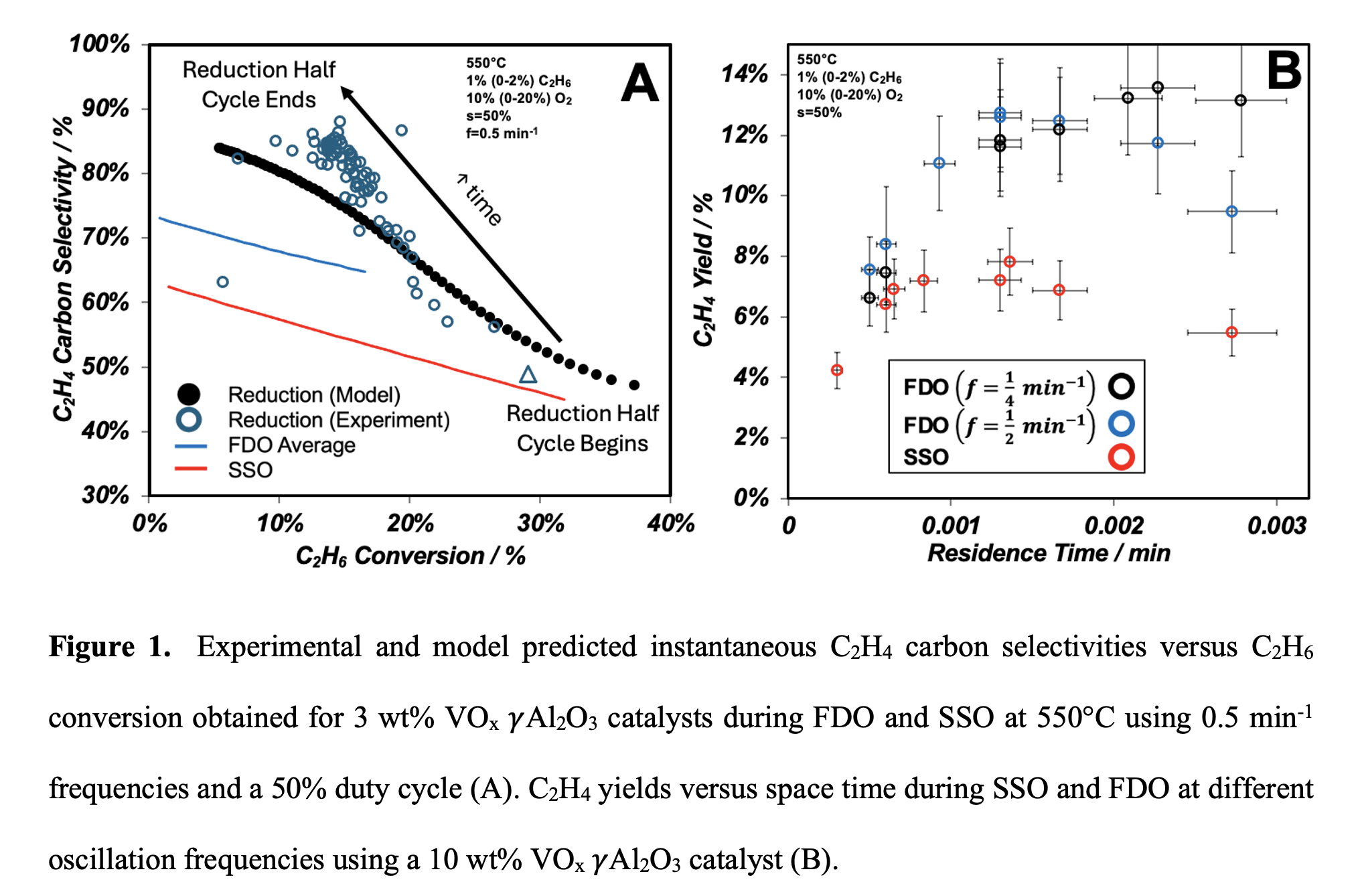2024 AIChE Annual Meeting
(451a) Overcoming Selectivity-Conversion Tradeoffs during Forced Dynamic Operation of Ethane Oxidative Dehydrogenation
Authors
Austin Morales - Presenter, University of Houston
Praveen Bollini, University of Houston
Michael Harold, University of Houston
Forced dynamic operation (FDO) of ethane oxidative dehydrogenation (ODH) has been demonstrated to enhance ethylene selectivities beyond those achieved by conventional steady state operation (SSO) at equivalent ethane conversions. Separating reduction and oxidation half cycles through FDO enhances ethylene selectivities by suppressing the formation of unselective chemisorbed oxygen responsible for total oxidation pathways. However, depletion of catalytically stored oxygen during the reduction half cycle results in lower FDO conversions compared to SSO at equivalent residence times. Consider Fig. 1A which plots experimentally measured and model predicted instantaneous ethylene selectivities and ethane conversions during the reduction half cycle. Fig. 1A shows decreasing ethane conversion with increasing ethylene selectivity as the reduction half cycle progresses following a sigmoidal shaped curve. This sigmoidal curve indicates that sufficiently short or extended reduction times obtained through high and low modulation frequencies respectively produce no meaningful selectivity gains despite continued conversion losses. The trade-off between ethylene selectivities and ethane conversion therefore poses a challenge when selecting modulation frequencies that optimize ethylene yields during FDO. As such, it is imperative to investigate the role of modulation frequency on FDO yields as illustrated in fig. 1B. Fig. 1B plots ethylene yields versus reactor residence times during SSO and FDO at different oscillation frequencies. Fig. 1B shows SSO ethylene yields increasing with residence time to a maximum of 7% at 1.0*10-3 min followed by a decrease as ethylene is overoxidized to COx. Interestingly, Fig. 1B shows FDO yields surpassing the maximum SSO yield reaching a new maximum of 12%. Fig. 1B shows that decreasing the frequency from 0.5 to 0.25 min-1 widens the envelope of yield enhancement resulting in elevated FDO yields at even higher residence times. This talk with further explore the use of modulation parameters to tune ethylene yields during FDO of ethane ODH.


